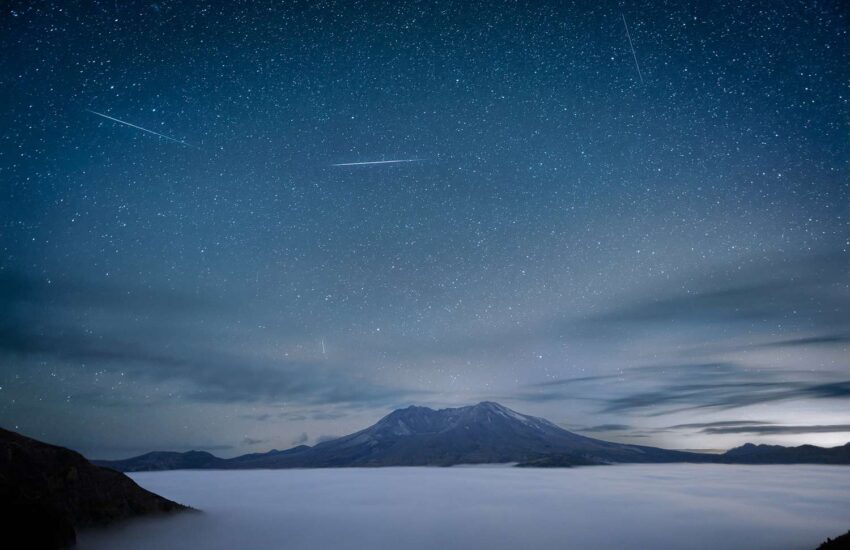Fireworks may be over, but there’s another reason to point your eyes to the sky this July!
Between the radiant Buck Moon and the spectacular Northern Lights, the cosmos have been extra active this month and show no sign of slowing down thanks to the meteor showers in effect at the end of the month.
The most exciting part? Not one, but two meteor showers will peak at the same time in a rare celestial event.
Sky-gazers hoping to make a wish upon a shooting star are in luck because one of the two meteor showers is infamously known for its faint display, so the second shower will provide an added opportunity to catch a glimpse.
Like all meteor showers, spotting one whiz by in the night sky is dependent upon various factors — some of which are out of a viewer’s control. While you can physically watch from a location far from light pollution, proper weather conditions don’t always align.
For example, fog and clouds can hinder visibility in the night. Furthermore, the moon’s bright glow can drown out the starry display depending on its lunar phase when the meteor showers peak.
Weather aside, star seekers should be in luck when these two meteor showers shoot. The moon will be approximately 20-30% full, likely producing a darker backdrop in contrast to the bright balls of light shooting through the night.
Here’s everything to know about the double meteor shower, including when and how to watch them.
Which two meteor showers will overlap in July 2024?
Getty
The two meteor showers that will overlap at the end of July are the Southern Delta Aquariids and the Alpha Capricornids. While the length of their activity differs, their peak coincides just before August begins.
Overlapping peaks will give stargazers a rare opportunity to spot double the amount of meteors whizzing across the night sky — but of course, only if weather conditions cater to clear viewing.
Viewers hoping to catch a glimpse will benefit from the active Alpha Capricornids because they are infamous for their faint display. Stargazers were in luck last year because they doubled up with the Perseids, deemed by NASA as the “best meteor shower of the year.”
Meanwhile, the American Meteor Society says the Alpha Capricornids are “not very strong” either. However, what is notable about this shower is “the number of bright fireballs produced during its activity period.”
How to spot the double meteor shower in the sky?
Meteor showers can be spotted all over the night sky, so it doesn’t quite matter where you cast your eyes. However, there are a few tips to catch the best view of the display.
Since the Delta Aquariids are known for their faint tails and dulled-fireball appearance, the American Meteor Society says looking at a section in the sky away from the moon will increase your chances of spotting them.
“Moonlight will be a minor factor from the waning crescent moon which rises in the early morning hours,” the society notes. “If the moon is above your horizon when viewing this shower, simply view more toward the southwestern sky.”
The same goes for the Capricornids. The American Meteor Society notes that this shower is seen “equally well” on both sides of the equator.
When will the double meteor shower peak?
Getty
The Delta Aquariids are predicted to peak late night on July 29 through early morning on July 30. The Capricornids are expected to reach max activity late night on July 30 into early morning on July 21, 2024.
That means the double meteor shower is predicted to peak on July 30, when both showers will overlap.
When will the next meteor shower peak?
Following the Delta Aquariids and the Capricornids, the next meteor shower to take place is the Perseids. They became active on July 14 and will peak between Aug. 11-12.

